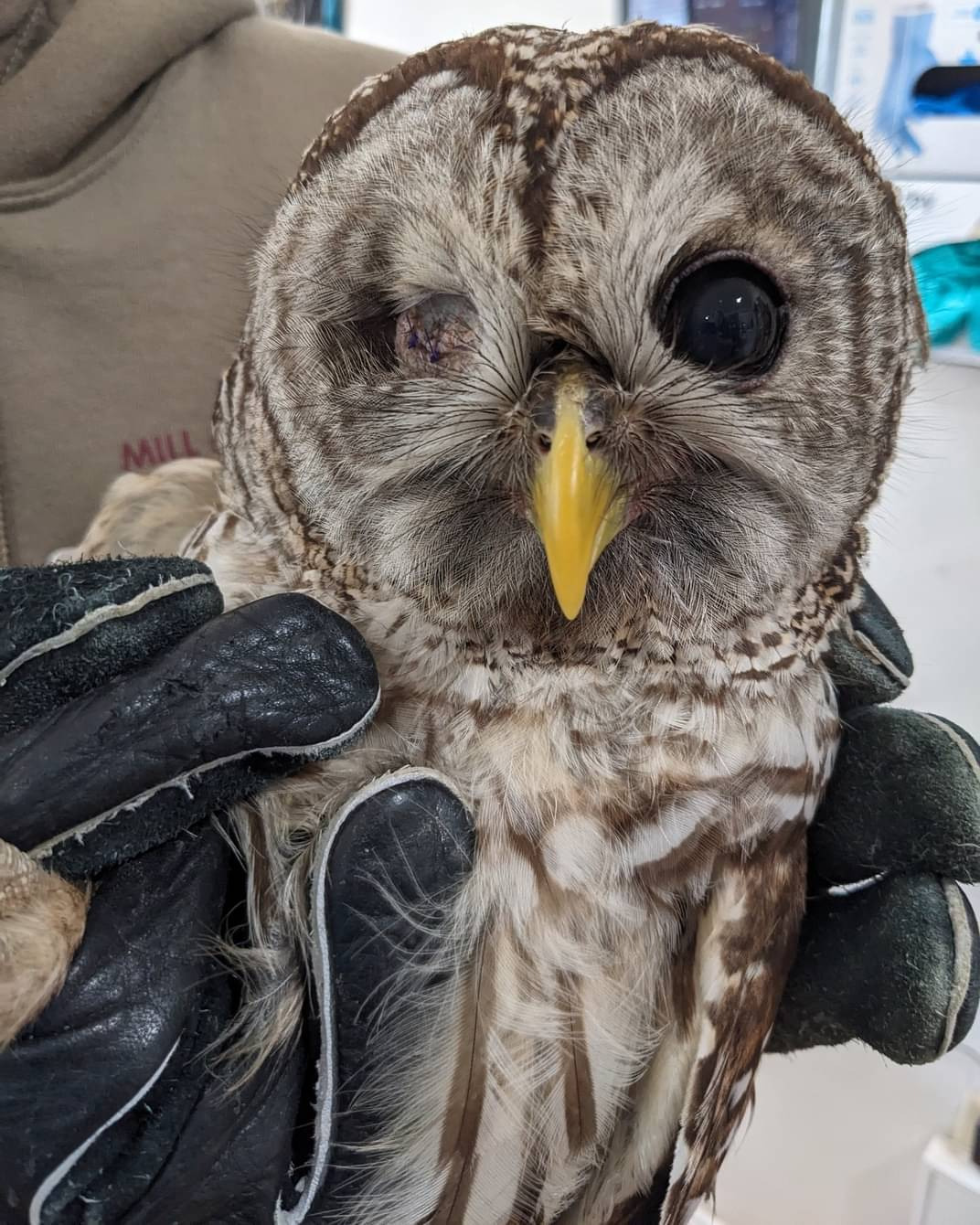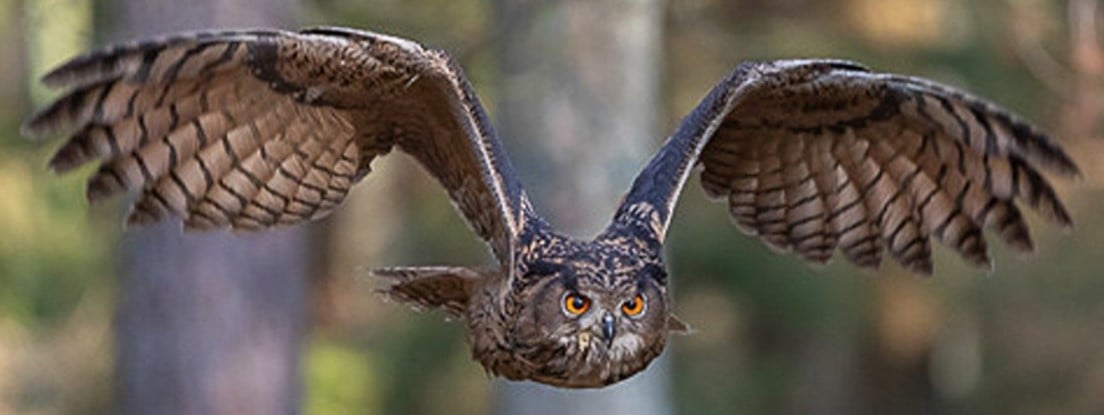From SW Virginia Wildlife Center of Roanoke
Wink!
Meet BADO 2025-0134, the Barred Owl! (Strix varia)
This beautiful owl came to us the way many patients do: As a victim of a vehicle strike. Like most owls, they enjoy hunting by roadsides at night, since the open roadway is the perfect place to spot a scurrying rodent and swoop in for the kill!
Unfortunately, though, nature didn't give them the innate instinct to look both ways before flying into the road, leading to catastrophic consequences. After all, Barred Owls have existed for at least the last 11,000 years... Cars have only been around for about a century! This sudden change in their ecosystem is brand-new, geologically speaking.
Owls' heads are about 60% eyeball, meaning that any head injury probably also causes an eye injury. Such was the case for BADO 2025-0134, who came in with limited vision and numerous ocular injuries. Their left eye improved, but the right eye continued to decline, resulting in its removal through a procedure called evisceration.
For most raptors, losing an eye is a death sentence. They require both eyes for depth perception, which is critical when you spend your time hunting for prey on the wing!
For owls, though, their freaky ears (we say this endearingly) are the key to surviving with only one eye! One ear is set slightly lower on their head, while the other ear is set slightly higher. This causes a very slight difference in when sound waves hit each ear, allowing the owl to triangulate the exact location of their prey in complete darkness!
Missing an eye still isn't an ideal, but adult owls with experience hunting can and do adjust to their handicap with their super-powered hearing. And so far, BADO 2025-0134 is doing well in adjusting to their new "outlook" on life! With luck, they will be a candidate for release back to the wild very soon.


That is so cool that he is a candidate for release! I did not know that!
Head/eye injuries can be so serious to owls since those eyes make up so much of their heads and they tend to often smack face first into whatever they hit. We just lost a cute young Screech due to a double eye injury. It's so amazing to see ones like this Barred have another opportunity to be able to live out its full natural life after such a disaster. It really makes me love the owls and the care providers even more for their stubborn persistence.